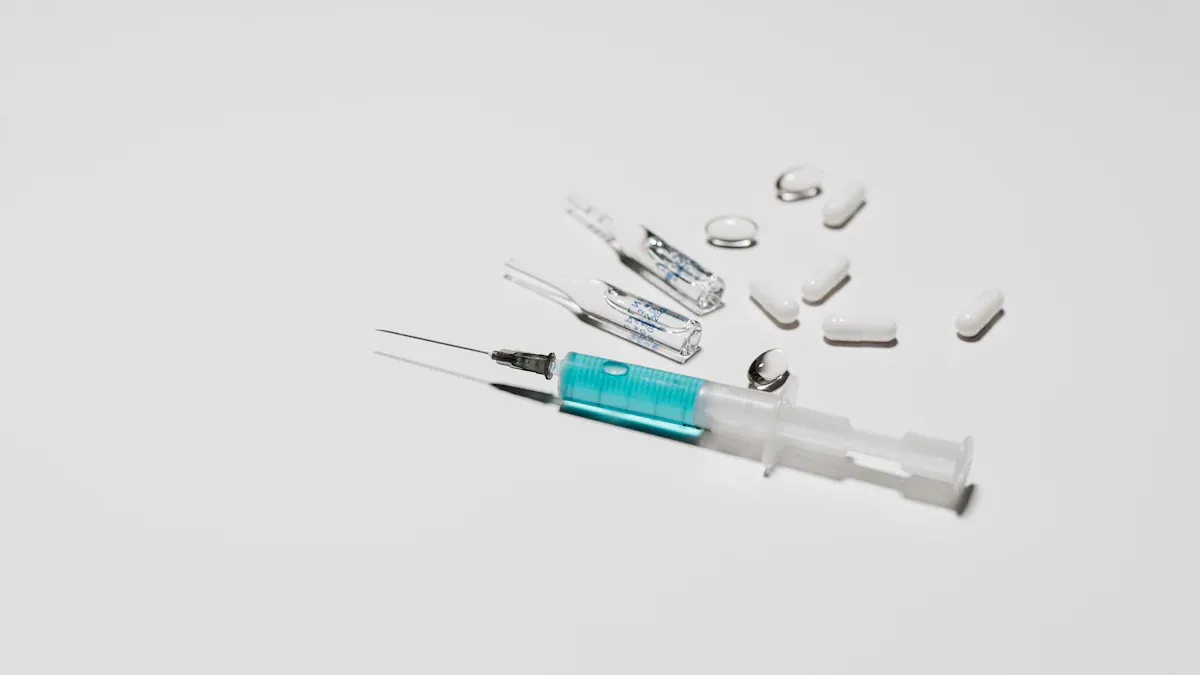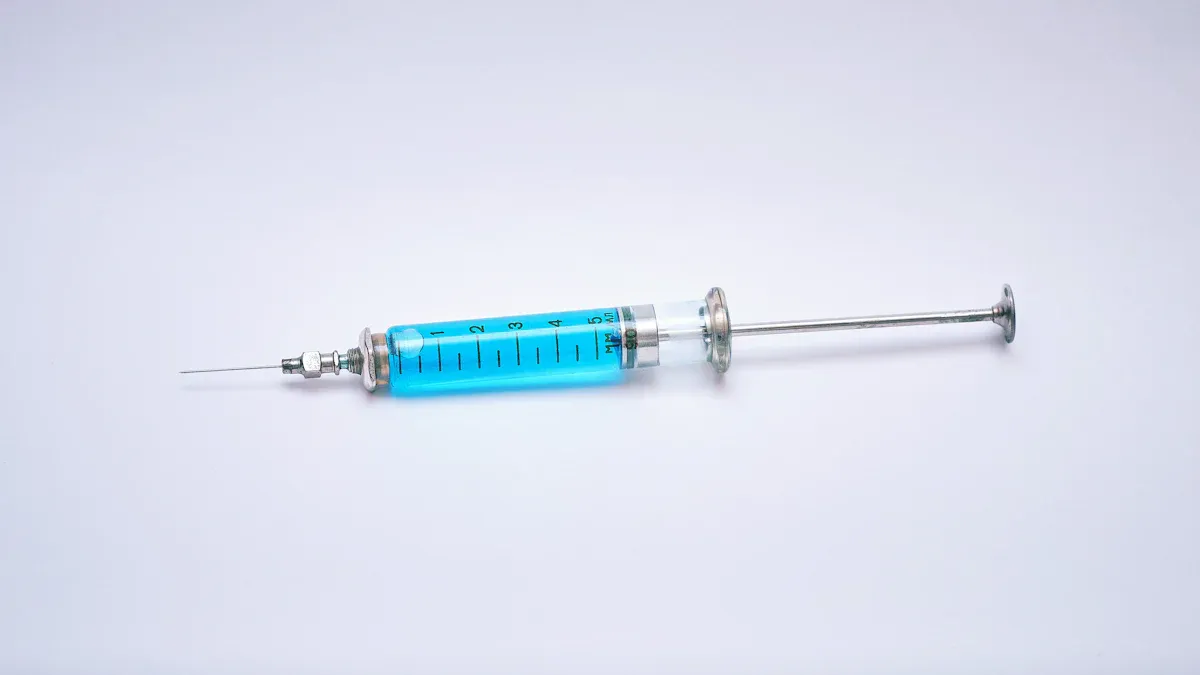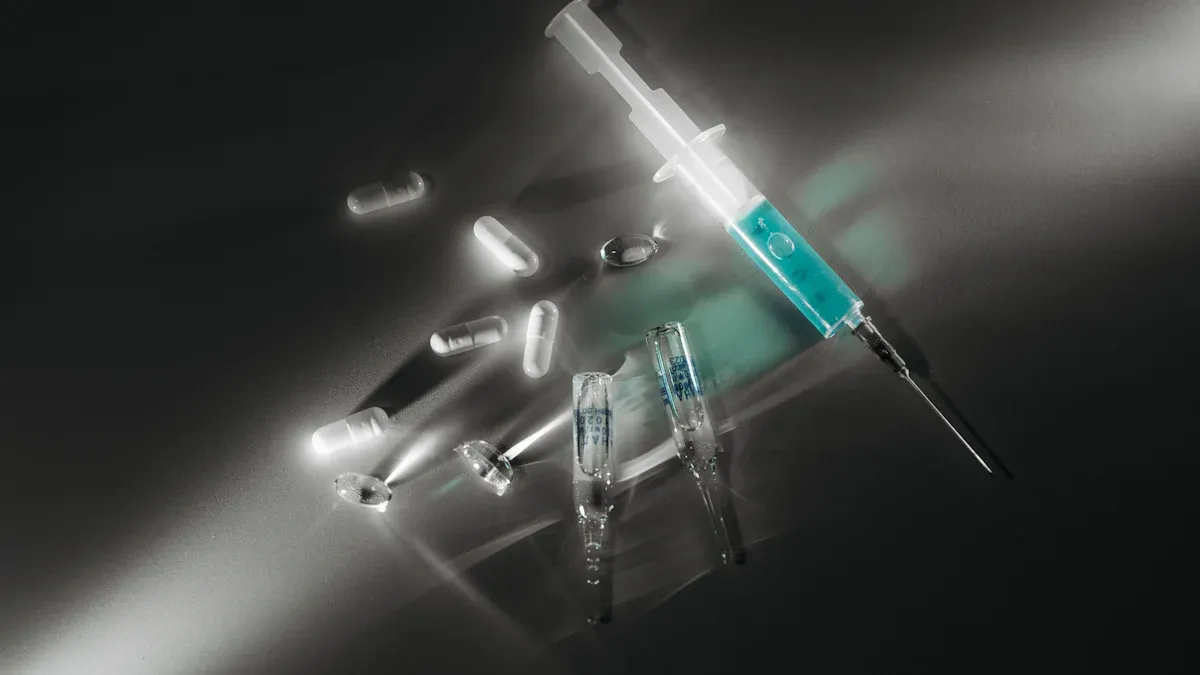
TAC Coating plays a vital role in modern medical devices. This advanced surface treatment enhances device performance by improving wear resistance and reducing friction. Its chemical vapor deposition (cvd Coating) process ensures precision, while its silicon carbide (sic Coating) properties provide exceptional durability. But what makes TAC Coating so essential in medical applications?
Key Takeaways
- TAC Coating makes medical devices stronger and last longer.
- It is safe for implants and tools, causing fewer problems.
- New ways to make TAC Coating are cheaper and better, helping it work in more medical tools.
What is TAC Coating?
Definition and Composition
TAC Coating, short for "Tetrahedral Amorphous Carbon Coating," is a specialized surface treatment used in medical devices. It consists of a thin layer of carbon atoms arranged in a unique tetrahedral structure. This structure gives the coating its exceptional hardness and smoothness. You’ll find that TAC Coating is applied using advanced techniques like chemical vapor deposition (CVD), ensuring precision and uniformity across the device’s surface.
The composition of TAC Coating includes carbon as the primary element, often combined with trace amounts of silicon or other materials to enhance its properties. Its molecular arrangement mimics diamond-like characteristics, making it one of the hardest and most durable coatings available. This combination of strength and smoothness makes TAC Coating ideal for medical applications where reliability and performance are critical.
Tip: TAC Coating’s diamond-like structure is what sets it apart from other coatings, offering unmatched durability and wear resistance.
Unique Features of TAC Coating
TAC Coating stands out due to its remarkable features. First, it provides superior wear resistance, ensuring medical devices last longer even under demanding conditions. Second, its ultra-smooth surface reduces friction, which is crucial for devices that interact with human tissue or fluids.
Another key feature is its biocompatibility. TAC Coating is non-toxic and safe for use in medical environments, making it suitable for implants and surgical tools. Additionally, it resists corrosion, maintaining its integrity even when exposed to harsh sterilization processes.
You’ll also appreciate its ability to enhance device performance. By reducing friction and wear, TAC Coating minimizes the risk of device failure, improving patient outcomes. These features make it a preferred choice for manufacturers aiming to create reliable and efficient medical devices.
Material Science of TAC Coating

Chemical and Physical Structure
The unique chemical and physical structure of TAC Coating sets it apart from other surface treatments. Its tetrahedral arrangement of carbon atoms creates a diamond-like structure. This structure gives the coating its exceptional hardness and smoothness. You’ll notice that this hardness makes it highly resistant to wear and tear, even under extreme conditions.
The physical properties of TAC Coating also include a low coefficient of friction. This means surfaces coated with it glide smoothly, reducing mechanical stress. The chemical composition, primarily carbon, ensures stability and resistance to chemical reactions. This stability is crucial for medical devices exposed to bodily fluids or sterilization processes.
Did you know? The diamond-like structure of TAC Coating not only enhances durability but also improves the overall performance of medical devices.
Biocompatibility and Durability
TAC Coating excels in biocompatibility, making it safe for use in medical environments. It doesn’t react with tissues or fluids, reducing the risk of adverse reactions. This property makes it ideal for implants and surgical tools. You can trust that devices coated with TAC Coating will perform reliably inside the human body.
Durability is another standout feature. The coating resists corrosion and maintains its integrity over time. Even after repeated sterilization cycles, it remains intact. This durability ensures that medical devices last longer, reducing the need for frequent replacements. By choosing TAC Coating, manufacturers can create products that are both safe and long-lasting.
Applications in Medical Devices

Devices Enhanced by TAC Coating
You’ll find TAC Coating used in a wide range of medical devices. Surgical tools, such as scalpels and forceps, benefit from its wear-resistant properties. These tools maintain their sharpness and precision even after repeated use. Implants, including joint replacements and dental prosthetics, also rely on TAC Coating. Its biocompatibility ensures safety when these devices interact with human tissue.
Diagnostic equipment, like endoscopes, gains improved performance from TAC Coating. The ultra-smooth surface reduces friction, allowing smoother insertion and maneuverability. Catheters and stents, which often face challenging environments inside the body, use TAC Coating to resist corrosion and maintain functionality. You’ll notice that devices coated with TAC Coating perform reliably, even under demanding conditions.
Note: TAC Coating’s durability makes it ideal for devices that require frequent sterilization or prolonged use.
Benefits for Patient Outcomes
TAC Coating directly impacts patient outcomes by enhancing device reliability. When surgical tools stay sharp and implants remain intact, procedures become safer and more effective. You’ll see fewer complications and faster recovery times. The coating’s smooth surface reduces irritation and discomfort, especially in devices like catheters and stents.
Patients benefit from the longevity of TAC Coating-enhanced devices. Fewer replacements mean less invasive procedures and lower healthcare costs. The biocompatibility of TAC Coating minimizes the risk of adverse reactions, ensuring a safer experience for patients. By improving device performance, TAC Coating contributes to better overall healthcare outcomes.
Tip: Choosing medical devices with TAC Coating can lead to improved patient satisfaction and long-term health benefits.
Challenges and Limitations
Manufacturing and Cost Issues
Producing TAC Coating involves advanced techniques like chemical vapor deposition (CVD). These methods require specialized equipment and highly controlled environments. You’ll notice that this increases the overall manufacturing complexity. The precision needed to apply the coating uniformly adds to the production time.
The cost of raw materials and the energy-intensive nature of the process also contribute to higher expenses. For manufacturers, this can make TAC Coating less appealing for low-cost medical devices. Smaller companies may struggle to afford the initial investment in equipment and training.
Note: While TAC Coating offers exceptional benefits, its high production costs can limit its widespread adoption in the medical industry.
Application-Specific Constraints
Not all medical devices are suitable for TAC Coating. Devices with intricate designs or extremely small components may pose challenges during the coating process. You might find that achieving uniform coverage on such devices is difficult.
Another limitation is the coating’s thickness. While TAC Coating is thin, it may still alter the dimensions of highly precise instruments. This can affect the functionality of devices that require exact measurements.
Additionally, some applications demand coatings with specific properties that TAC Coating cannot provide. For example, devices exposed to extreme chemical environments may require alternative materials.
Tip: Understanding the limitations of TAC Coating helps you make informed decisions when selecting materials for medical devices.
Future Trends in TAC Coating
Innovations in Material Science
You can expect exciting advancements in the material science behind TAC Coating. Researchers are exploring ways to enhance its properties by introducing new elements into its composition. For example, adding trace amounts of metals or ceramics could improve its hardness and thermal stability. These innovations aim to make the coating even more durable and versatile.
Another area of focus is the development of eco-friendly production methods. Scientists are working on reducing the energy consumption of the chemical vapor deposition process. This could lower manufacturing costs and make TAC Coating more accessible to a wider range of medical device manufacturers.
Nanotechnology is also playing a role in shaping the future of TAC Coating. By manipulating materials at the atomic level, researchers can create coatings with even smoother surfaces and improved biocompatibility. These advancements could lead to medical devices that perform better and last longer.
Expanding Applications in Healthcare
The use of TAC Coating is expanding into new areas of healthcare. You’ll see it being applied to advanced robotic surgical tools. These tools require coatings that reduce friction and enhance precision, making TAC Coating an ideal choice.
Wearable medical devices are another growing application. Coatings that resist wear and corrosion can extend the lifespan of these devices, ensuring they remain reliable for patients. Additionally, TAC Coating is being tested for use in drug delivery systems. Its biocompatibility and durability make it suitable for devices that interact with sensitive tissues.
In the future, you may find TAC Coating used in areas like regenerative medicine and bioengineering. Its unique properties could support the development of innovative implants and prosthetics. These applications highlight the potential of TAC Coating to revolutionize healthcare.
TAC coating transforms medical devices by enhancing durability, biocompatibility, and performance. You benefit from safer, longer-lasting tools and implants. While manufacturing challenges exist, innovations in material science promise cost-effective solutions.
Looking ahead: TAC coating will drive advancements in healthcare, enabling cutting-edge devices that improve patient care and outcomes.
FAQ
What makes TAC coating different from other coatings?
TAC coating features a diamond-like structure, offering unmatched hardness, smoothness, and biocompatibility. These qualities make it ideal for medical devices requiring durability and safety.
Can TAC coating be used on all medical devices?
No, TAC coating works best on devices with simple designs. Intricate or extremely small components may face challenges during the coating process, affecting uniformity.
How does TAC coating improve patient outcomes?
TAC coating enhances device reliability, reduces friction, and minimizes wear. These improvements lead to safer procedures, fewer complications, and faster recovery times for patients.


